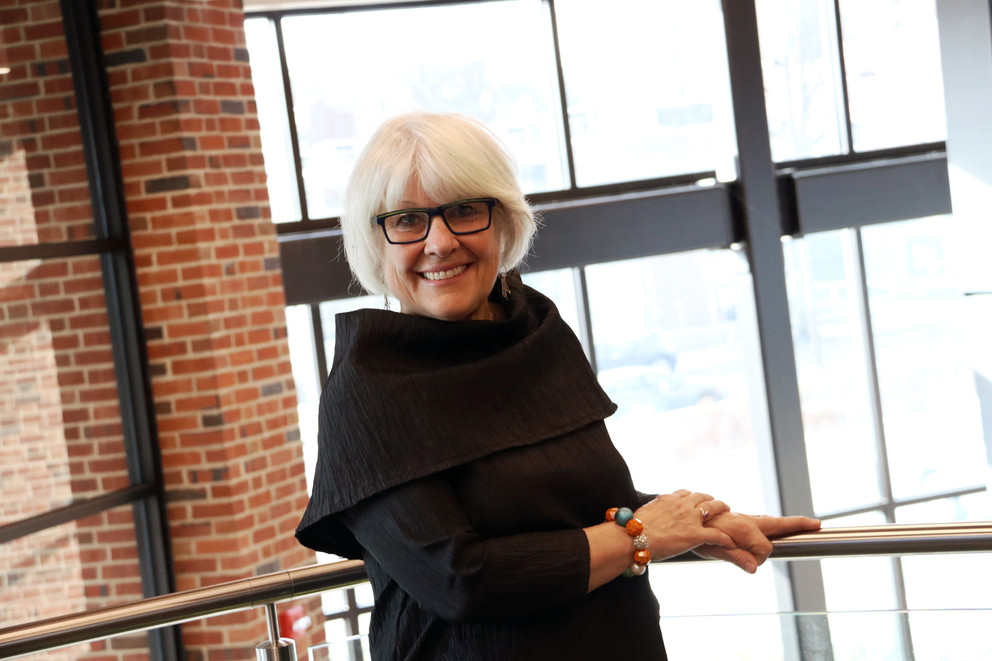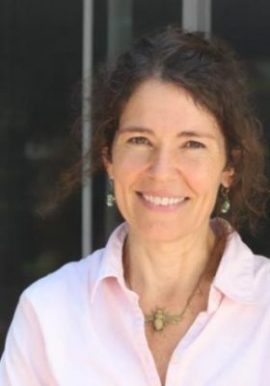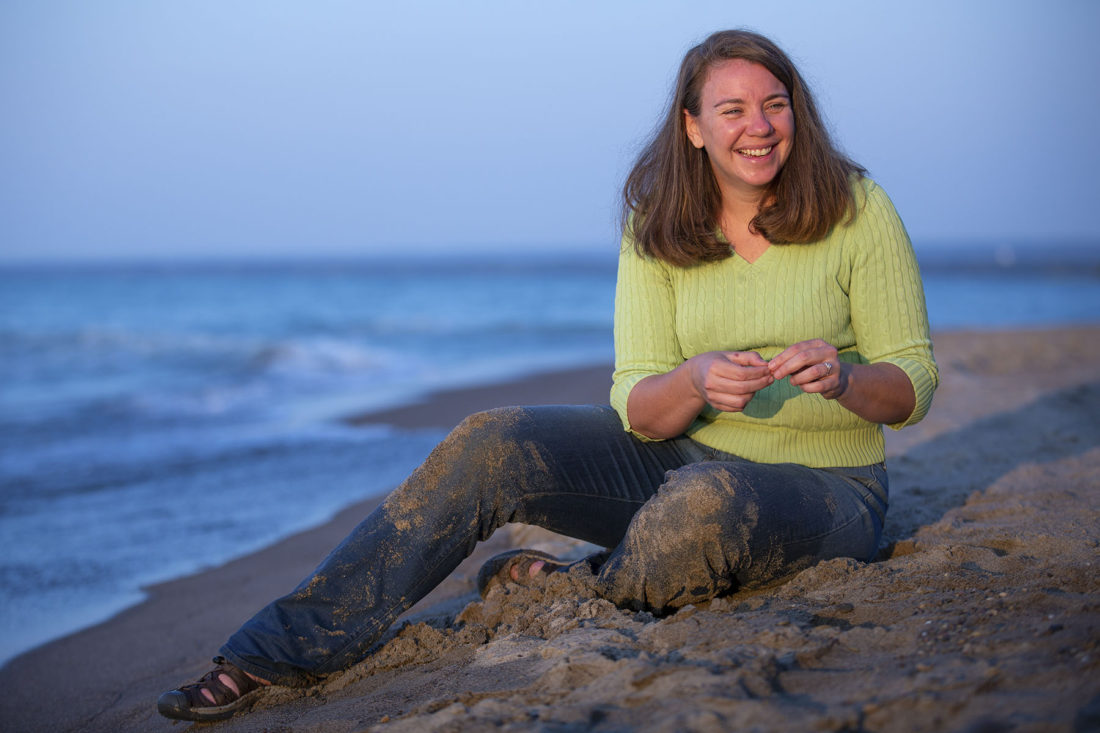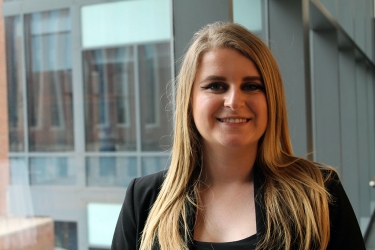Darlene Clark, Retired College of Nursing Assistant Teaching Professor
Darlene Clark is a recently retired Assistant Teaching Professor from the College of Nursing at Penn State. She helped pioneer the incorporation of sustainability concepts into the college by creating a program to recycle clean medical waste products and bring the Sustainable Development Goals (SDGs) into the nursing curriculum. Her work focused on sustainability, healthcare disparities, and inspiring and empowering undergraduate women to become future leaders.
Why is sustainability important to you?
I believe in it on an individual personal level, but I also have grandchildren now, and I really care about what the future holds for them. We’re at a critical point right now and we’re in trouble. We’re making strides, but we need to do a lot more.
Nursing, as a profession, is integrally related to health and wellbeing and to addressing health disparities. People who live and work near factories, fracking or industrial areas (often low income) are at risk of cardiac and pulmonary disease, stress and contaminated air and water. They often don’t have the option of living elsewhere nor do they have the financial ability to collectively prevent such businesses from moving into their neighborhoods. Those with greater wealth can often petition and prevent industrial contaminators from moving into their neighborhoods thus creating health inequities. Everyone is entitled to live in a safe, nontoxic environment.
What drew you towards incorporating sustainability into your field?
For me personally, it’s been a driving force for the last 12+ years. I drive a 16-year-old Prius and rode my bike or CATA bus to work while at Penn State. I try to be a good sustainably focused citizen in my professional life.
When the Nursing Clinical Simulation Lab was built in 2012, nursing faculty observed how much clean, uncontaminated single use plastic we were using and then disposing in the trash. A small seed grant on simulation lab recycling was written and awarded allowing us to use special signage and bins to recycle most of the plastic. Examples included EKG paper, empty syringes without the needle, gloves, intravenous tubing, plastic packaging and numerous plastic one time use pieces of equipment. The compost bin was also utilized, at the time, for oranges and hot dogs used to simulate injection technique. Student nurses were encouraged to think about what they throw away in the hospital setting as well and how they might decrease workplace waste. Sadly, ten percent of all waste in the US comes from medical waste.
Can you explain the simulation lab project a bit more and elaborate on what is involved in it?
It involved a) applying for and receiving the grant, b) implementing it, c) and making a six-minute video for all students and faculty to view to learn where recyclables belong, and then having faculty or students who were members of the Green Team there as a resource when there were questions about proper disposal. Laminated cards were distributed with visual reminders and examples of healthcare equipment that could be recycled. Repurposing equipment as well as reusing equipment was also a viable option.
How does sustainability and the Sustainable Development Goals relate to the nursing field?
It relates to everything that nurses do every day. Every time we encounter our patients, we are teaching them and serving as their advocates (SDG 3). We encourage minimizing the use of medications, as every drug that is ingested ends up in wastewater (SDG 6). Pharmaceutical experts are now working on formulas for medications that aren’t toxic to the water supply so that when the medication is excreted in the urine as waste, it doesn’t harm the environment. Everything nurses do should be viewed with sustainability in mind.
Unfortunately, we live in a world of single use plastics in health care. When I was a young nurse, our equipment was primarily composed of metal, and it would get autoclaved, sterilized, and then reused. We won’t be returning to those days but we can teach our students and our patients to be mindful of what single use products are really needed in the patients’ room as the product is contaminated and must be disposed of, whether it is used or not, once it is taken into a room.
Nurses also should be thinking about better, safer, less toxic ways to create a product. An organization called Health Care Without Harm (HCWH), for example, found that plastic IV tubing and plastic IV bag particles were leaching out of the bag and the tubing into the patient’s veins. They reengineered the components for safer intravenous delivery. Hygiene products such as shampoos, hair conditioners, and even sunscreen are often made of products that contaminate the water supply Until recently, patients with asthma used inhalers which expelled fluorocarbons into the atmosphere which then breaks down the ozone layer. Nurses must remain vigilant about utilizing safer, nontoxic products in healthcare.
What are some other sustainability projects in the College of Nursing?
Our latest project focuses on incorporating the 17 SDGs into our nursing curriculum. Nursing practice utilizes all of the goals, from gender equity, health and well being, to life above water and life below water. Deleterious health effects such as lead in Detroit’s water supply, gaseous pollutants in the air from industrial waste, and the effects of fracking are all related to both sustainability and healthcare. In every nursing lecture in our core curriculum, there is content on issues related to one or more of the SDGs. Pilot incorporation of the SDGs was implemented this fall (2021).
What do you look for when incorporating sustainability into a class or curriculum?
This past year a course called Nursing 350: Legal, Ethical, and Genetic Issues in Nursing, was used as a pilot. The first slide of every lecture highlighted all of the SDGs. Within that slide were the SDGs that would be met that day. They were subsequently covered in the content with each lecture. For example, when discussing genetics, a connection is made between genetic mutations that can occur with exposure to chemicals. One full lecture is set aside to summarize each of the 17 goals and how they relate to nursing in particular and to healthcare overall. Students are also first introduced to the SDGs in nursing’s First Year Seminars. Many, if not most diseases, have a lifestyle or genetic component which can be mitigated or treated with sustainable behaviors such as overcoming poverty, hunger, quality education, clean water and sanitation and climate action, as examples.
Nursing faculty have only recently begun to implement sustainability into course content. Peter Buck, from the Sustainability Institute has done a thorough job of reviewing curriculum in the core nursing courses at Penn State at the undergraduate level and is reviewing sustainability content at the graduate level and provides advice on how to better highlight nursing and its integral relationship to sustainability.
What makes sustainability curriculum successful? Have you ever encountered problems with the curriculum not sticking or people not wanting to do it?
Incorporating sustainability in the nursing curriculum is only successful if faculty understand its value and are willing to highlight its relevance in existing course content. Behavior change is difficult but becomes less cumbersome with faculty orientation. To assist with the transition, two of our students from the Nursing Sustainability Council created a “how to” video on incorporating sustainability into the curriculum and who to contact with questions. To further educate the faculty, a variety of nursing curricular concepts were summarized, as examples, with topically related SDGs. We developed a template for all the courses and included which SDGs could be met based on the objectives for the courses and the course content. As with any new change, buy in is important as well as a commitment to introduce students to sustainability and its relationship to the profession of nursing.
What is the Women’s Leadership Initiative and what was your involvement in it?
The Women’s Leadership Initiative was a group of 30 to 35 women at the junior level in Health and Human Development (HHD) and Nursing. It’s a yearlong program with competitive selection. Each student had to write essays and solicit a faculty letter of recommendation for the selection process. We tried to choose a mix of young women who had a bit of leadership experience and women who didn’t have any. We thought that those that had exposure could help those that didn’t. The goal was to mold the student into a more confident, poised female leader in the workplace, which is still a bit unbalanced. We focused on conflict resolution, the Myers-Briggs Type Indicator (MBTI), Strengths Finder, networking, and public speaking. We spent a day in Harrisburg with female leaders working in both non-profit and profit positions, state legislators, and judges, and there would be panelist discussions throughout the day. This year, unfortunately, the program was held virtually. These discussions provided the students an opportunity to look at the many, many employment opportunities that they can explore. A key takeaway from the yearlong program was to develop competence and following their paths. Many of the activities were designed to have students function outside their comfort zone in order to develop confidence.
I’m curious because I haven’t gotten somebody in the health fields perspective on this, but why do you think the COVID vaccination campaign was going slower for communities of color and what you think we could be doing better for those communities?
I think we can do better by having a physician or nurse of color be the leader in promoting the vaccine. You know, someone from each community who can say “this is what I endorse, here are the facts, please come and get the vaccine.” This is so important. Having someone from your own community say that this is valuable is a first step. I think the suspicion and the hesitation a lot of times is from not trusting folks in healthcare because of past wrongs done. Going all the way back to the Tuskegee study, even though that was a long time ago, that legacy carries on generation to generation of how badly people were treated. The continued suspicion of “we weren’t treated well in the past. Why should I trust you now?” is very much alive. As health care workers, we have to earn and then gain trust.
Imagine it’s 20 years in the future and Penn State and our communities have become more sustainable and resilient. What would that look like to you? What institutions might be a place that aren’t today that you hope for?
I think having a 0 carbon footprint would be great. Completely divesting of fossil fuel would be an important positive action. Having all electric vehicles on campus and fewer and fewer cars and vehicles overall would be a plus. More walking and/or biking as modes of transportation would make for healthier students/faculty/staff and cleaner air. Penn State’s doing a great job with limiting cars on campus and using natural gas busses. But we could make it more bike friendly, with incentives, and have more electric charging stations for electric vehicles. I think Penn State has sustainable, environmental content in their strategic goals set out for the next 10 years, which is great.
What do you hope is the impact of your work in the future?
Just to continue doing what I’m doing and taking more and more baby steps. Being a role model for my grandchildren. Being a sustainable role model in the community so that a friend/neighbor might include more sustainable practices as a result of our interactions with each other. I hope to be more legislatively active too in the climate action arena.






